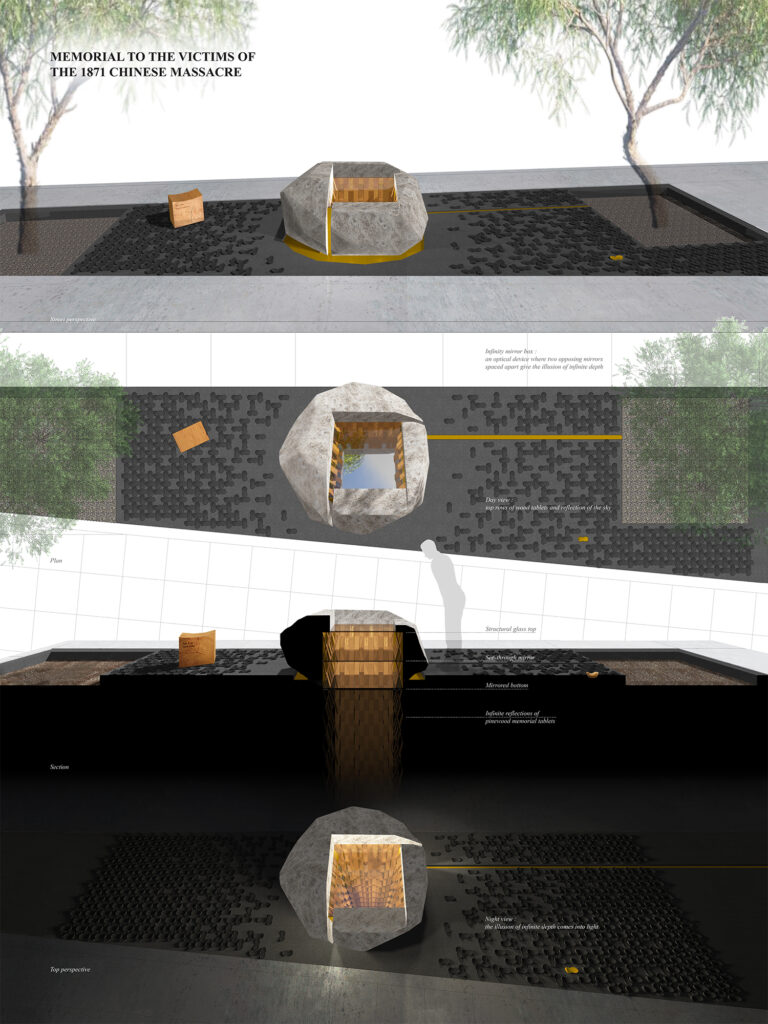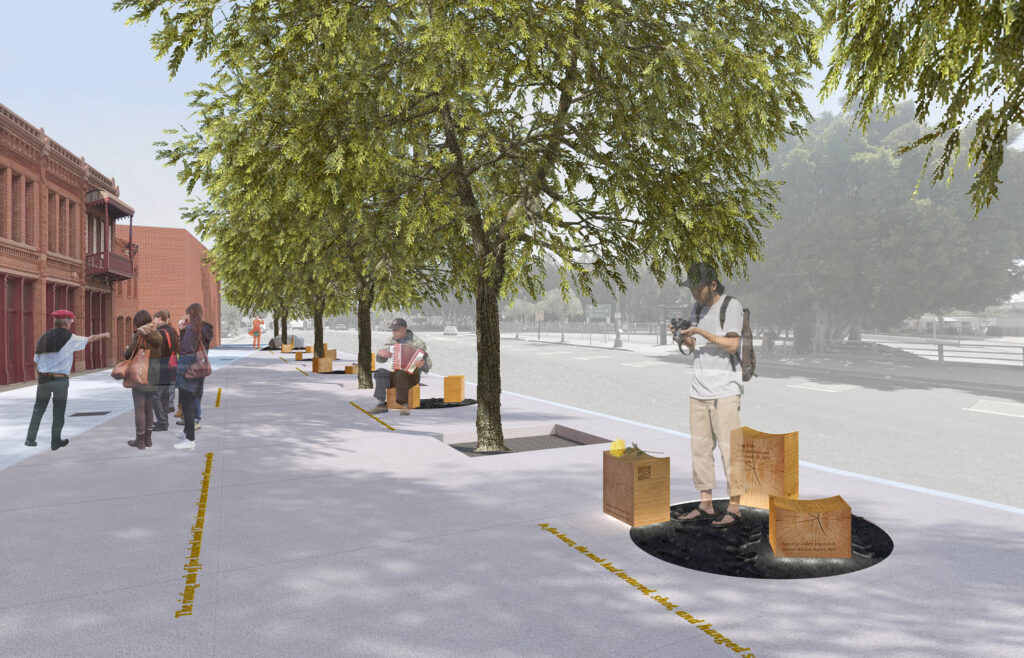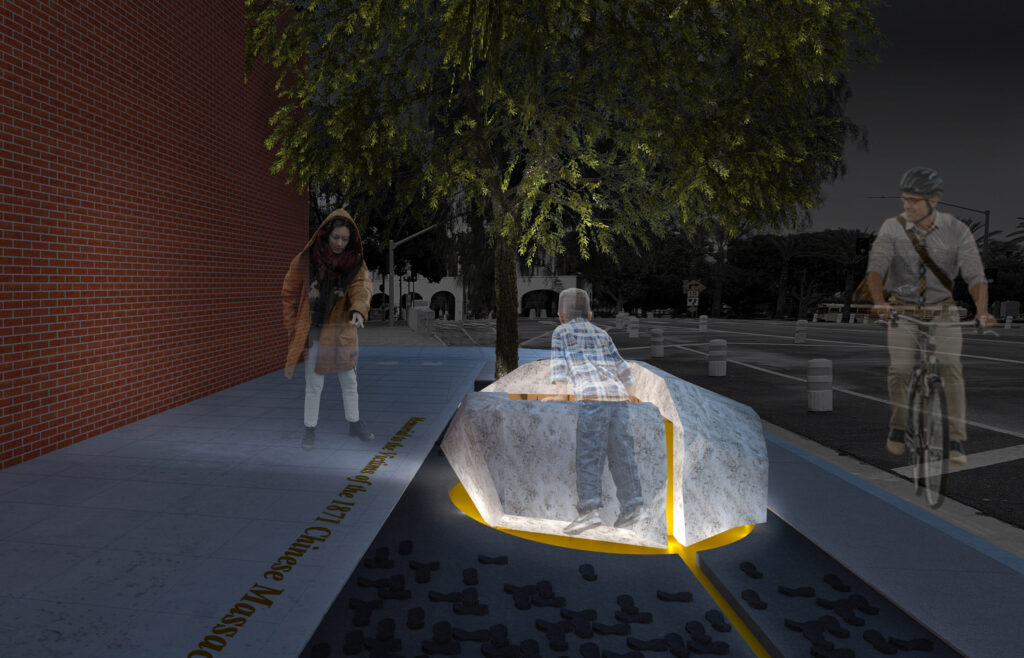1871 memorial

A classical poem by Li Bai ends with this couplet:
Lifting my head to gaze at the moon
Lowering my head I think of home
It captures the immigrant’s sentiment at its purest. The upward gaze of hope and aspiration, and the downward gaze of remembrance and longing for that left behind.
Our proposal for the Memorial to the Victims of the 1871 Chinese Massacre in Los Angeles builds upon the gestural experiences and spatial metaphors in the raising and lowering of one’s head and the feelings that they elicit. We aim to inspire reflection and empathy; and to invite one to feel in another’s place for a moment.
LOS ANGELES CA
2023
Publication:
LA TIMES
ARTNET
ARCH DAILY
Award:
FINALIST

A split boulder rises from a sea of black ingot-shaped paver bricks.
An infinity mirror box is encased in the boulder. Its illuminated walls of optically infinite depth are lined with pinewood tablets. The top rows of tablets are inscribed with the identities of the massacre victims and others left blank; they recall ancestral memorial tablets in village temples. The pinewood ‘shaft’ echoes the depth of Chinese-American roots on this land, and the magnitude of loss to violence against the Asian-American community through centuries. The sea of coal-black ingots alludes to the multitude of immigrant stories untold and the “Streets paved with gold” myth that continues to beckon many.

18 Chinese workers’ stools fashioned from thermally-treated pine will serve as street furniture at the four sites of the massacre. Each stool recalls a life taken; each an invitation to fill the absence; and each a marker to link this spatial narrative of our collective history.
A Guangdong white pine tree rises at the Chinese American Museum’s entry court. An emblem of immortality, the living pine shares the origin of the lives taken and establishes a material link to the tablets and workers’ stools. It grows as a symbol of hope, connecting our past and our future.

